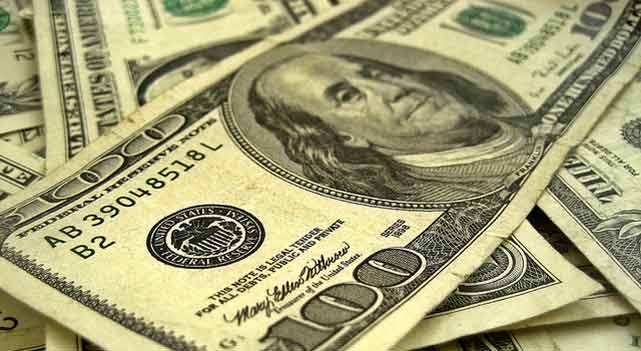British Pound to Dollar Forecast: GBP Supported Above 1.32 After Choppy Budget Trading
- Written by
Frank Davies

The Pound to Dollar exchange rate (GBP/USD) surged to four-week highs above 1.32 after chaotic budget leaks triggered short covering and coincided with a softer US dollar.
A sustained break higher would ease downside risks, though questions remain over whether gains can hold.
Markets now turn to gilt stability and Fed-cut expectations to gauge the next leg for Sterling.
There was choppy Pound trading surrounding the UK budget, especially as the measures and forecasts were mistakenly published ahead of the formal budget speech.
The Pound secured short covering while the dollar held a soft tone in global markets.
The Pound to Dollar rate dipped to lows below the 1.3150 level before rallying to 4-week highs above 1.32.
A sustained move above 1.32 would lessen underlying downside currency risks, but there will still be doubts whether gains can hold.
Macquarie Group's global FX and rates strategist, Thierry Wizman commented; “Speculative and hedging activity against the GBP has stepped up in the multi-week lead-up to the UK's Autumn Budget statement. The currency could see a relief rally, albeit temporarily, if the budget is seen to be "fiscally responsible".”
There was high volatility in the bond market. The 10-year yield briefly dipped to 4.43% before jumping back to 4.53% and then retreating again to 4.45%.
The main budget points had all been leaked or announced in advance.
As expected, personal tax allowances will be frozen, but for a further three years to 2030/31 compared with the 2 years expected.
The borrowing requirement estimate for 2025/26 has been increased to £138.3bn from the March estimate of £117.7bn.
The budget deficit is forecast to decline to 4.5% of GDP in 2025/26 to 1.9% in 2030/31.
The Office for Budget Responsibility (OBR) lowered the medium-term UK productivity growth forecast to 1.0% from 1.3% previously with average GDP growth lowered to 1.5% from the 1.8% projected in March.
According to the OBR, there will be a net tax increase of £26.1bn by 2029/30.
The amount of fiscal headroom is projected to increase to £21.7bn from £9.9bn in March.
Investec Chief Economist Philip Shaw commented; “from what we can see at the moment, the fiscal numbers look relatively benign, with the government on track to meet its fiscal rules more comfortably than expected."
According to Berenberg Senior UK Economist Andrew Wishart; "The headroom has increased and more importantly we can see a tightening in the budget deficit over the next two years and that supports the argument for BOE rate cuts."
The dollar overall remained on the back foot amid strong expectations that the Fed would deliver another rate cut at the December meeting.
There were also reports overnight that Kevin Hassett was emerging as the front-runner to be named as the next Fed Chair.
Hassett would be likely to be a notably dovish appointment which undermined the dollar.
ING commented; “Hassett is one of the most dovish candidates, and his nomination could prompt markets to revise the terminal rate lower (now just below 3.0%) and weigh on the dollar.”
STORY LINK British Pound to Dollar Forecast: GBP Supported Above 1.32 After Choppy Budget Trading

The Pound to Dollar exchange rate (GBP/USD) surged to four-week highs above 1.32 after chaotic budget leaks triggered short covering and coincided with a softer US dollar.
A sustained break higher would ease downside risks, though questions remain over whether gains can hold.
Markets now turn to gilt stability and Fed-cut expectations to gauge the next leg for Sterling.
GBP/USD Forecasts: 4-Week Highs
There was choppy Pound trading surrounding the UK budget, especially as the measures and forecasts were mistakenly published ahead of the formal budget speech.
The Pound secured short covering while the dollar held a soft tone in global markets.
The Pound to Dollar rate dipped to lows below the 1.3150 level before rallying to 4-week highs above 1.32.
Save on Your GBP/USD Transfer
Get better rates and lower fees on your next international money transfer. Compare TorFX with top UK banks in seconds and see how much you could save.
Macquarie Group's global FX and rates strategist, Thierry Wizman commented; “Speculative and hedging activity against the GBP has stepped up in the multi-week lead-up to the UK's Autumn Budget statement. The currency could see a relief rally, albeit temporarily, if the budget is seen to be "fiscally responsible".”
There was high volatility in the bond market. The 10-year yield briefly dipped to 4.43% before jumping back to 4.53% and then retreating again to 4.45%.
The main budget points had all been leaked or announced in advance.
As expected, personal tax allowances will be frozen, but for a further three years to 2030/31 compared with the 2 years expected.
The borrowing requirement estimate for 2025/26 has been increased to £138.3bn from the March estimate of £117.7bn.
The budget deficit is forecast to decline to 4.5% of GDP in 2025/26 to 1.9% in 2030/31.
The Office for Budget Responsibility (OBR) lowered the medium-term UK productivity growth forecast to 1.0% from 1.3% previously with average GDP growth lowered to 1.5% from the 1.8% projected in March.
According to the OBR, there will be a net tax increase of £26.1bn by 2029/30.
The amount of fiscal headroom is projected to increase to £21.7bn from £9.9bn in March.
Investec Chief Economist Philip Shaw commented; “from what we can see at the moment, the fiscal numbers look relatively benign, with the government on track to meet its fiscal rules more comfortably than expected."
According to Berenberg Senior UK Economist Andrew Wishart; "The headroom has increased and more importantly we can see a tightening in the budget deficit over the next two years and that supports the argument for BOE rate cuts."
The dollar overall remained on the back foot amid strong expectations that the Fed would deliver another rate cut at the December meeting.
There were also reports overnight that Kevin Hassett was emerging as the front-runner to be named as the next Fed Chair.
Hassett would be likely to be a notably dovish appointment which undermined the dollar.
ING commented; “Hassett is one of the most dovish candidates, and his nomination could prompt markets to revise the terminal rate lower (now just below 3.0%) and weigh on the dollar.”
International Money Transfer? Ask our resident FX expert a money transfer question or try John's new, free, no-obligation personal service! ,where he helps every step of the way, ensuring you get the best exchange rates on your currency requirements.
TAGS: Pound Dollar Forecasts
Comments are currrently disabled
Related Stories:
- British Pound to Dollar Forecast: GBP Supported Above 1.32 After Choppy Budget Trading - November 27, 2025
- GBP to USD Forecast: Pound Sterling Breaks Above $1.32 After Budget Boost - November 26, 2025
- GBP to USD Forecast: Pound Sterling Nears Weekly High on Dovish Fed Signals - November 25, 2025
- Pound to Dollar Forecast: GBP/USD Expected to Stabilise with Budget Risk Already Priced - November 25, 2025
- GBP/USD Forecast: Pound Sterling Steady as Markets Brace for UK Budget - November 24, 2025
- British Pound to Dollar Forecast: GBP/USD Holds Above 1.31 Ahead of Budget Risk - November 24, 2025
- British Pound to Dollar Forecast: GBP/USD Risks Tilted to Upside - November 22, 2025
- Pound-to-Dollar Forecast: Mixed US Labour Data Keeps USD Soft, GBP Stabilises - November 21, 2025
- GBP to USD Forecast: Pound Sterling Upside to be Limited Ahead of UK Budget - November 20, 2025
Latest News:
- British Pound to Euro Forecast: GBP/EUR at 4-Week Best After Budget - November 27, 2025
- British Pound to Dollar Forecast: GBP Supported Above 1.32 After Choppy Budget Trading - November 27, 2025
- Pound to Euro Firms as Markets Assess Budget Impact - November 26, 2025
- GBP to USD Forecast: Pound Sterling Breaks Above $1.32 After Budget Boost - November 26, 2025
- Pound-to-Euro Budget Day Forecast: Make-or-Break for GBP - November 26, 2025
- GBP to USD Forecast: Pound Sterling Nears Weekly High on Dovish Fed Signals - November 25, 2025
- Budget Jitters Keep Pound to Euro Rangebound - November 25, 2025
- Pound to Dollar Forecast: GBP/USD Expected to Stabilise with Budget Risk Already Priced - November 25, 2025
- British Pound to Euro Forecast: Sell GBP/EUR Rallies in 1.14 Area - November 25, 2025
- GBP/USD Forecast: Pound Sterling Steady as Markets Brace for UK Budget - November 24, 2025









